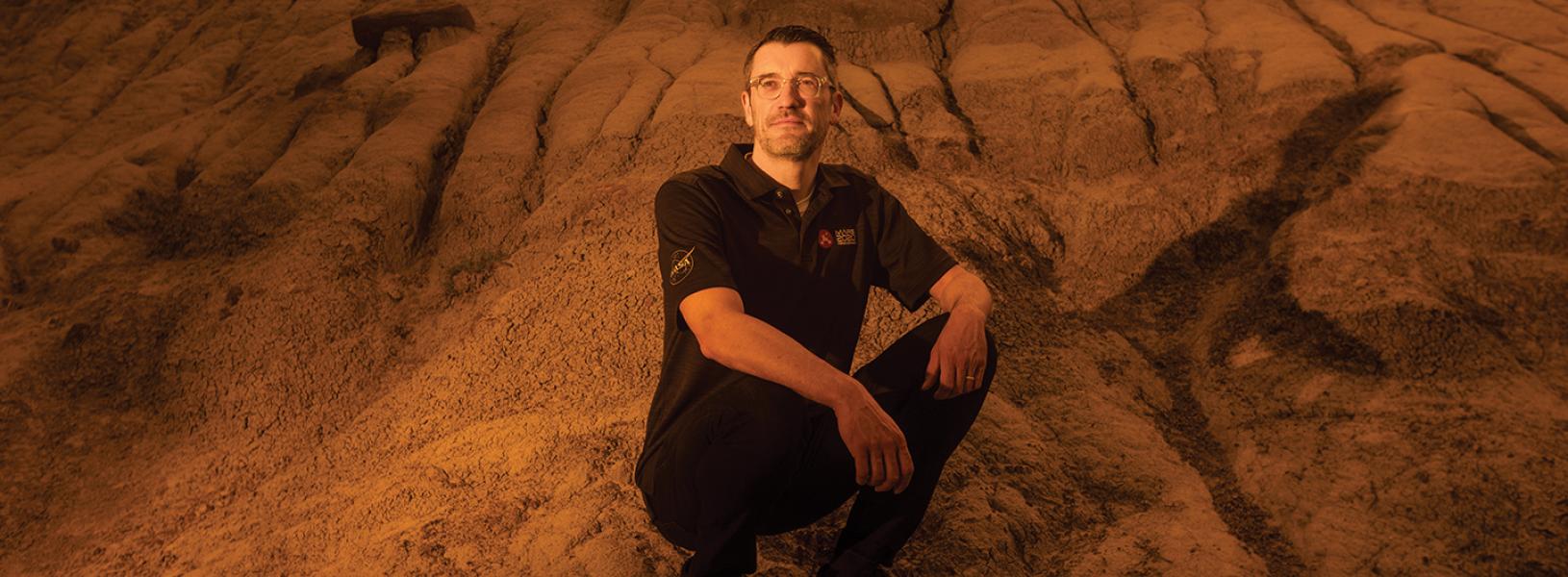Science fiction drew him in as a teenager – the stories of Isaac Asimov and others – and so did an early fascination with Mars. But there were twists and turns before Dr. Chris Herd reached his current job advising NASA on how its newest Mars rover should hunt for rock samples.
By age 12, he recalls, “there was something that captured my imagination about Mars and how Earth-like it is in some ways and not in other ways.”
It helped that he had an expert right at home. Dr. Richard Herd, his father, was for 30 years curator of our National Meteorite Collection at the Geological Survey of Canada. And he loves to talk about space rocks.
The young Chris came to Queen’s as an undergrad, with his mind fixed on space.
“Right from the get-go he wanted to study Mars and he wanted to be a geologist,” his father says. His son also considered astrophysics, but he felt space rocks were “more hands on.”
From Queen’s he moved to the clear skies at the University of New Mexico, in Albuquerque, to study under the legendary Jim Papike, an expert in meteorites and other extraterrestrial samples, including moon rocks collected by NASA during the Apollo missions. He told his Canadian grad student that one day he should do on Mars what Dr. Papike had helped to do on the moon – find the right rocks for NASA to collect.
Since graduation, Dr. Herd has taught at the University of Alberta, taking advantage of another twist: one January night in 2000 there was a streak of fire and an almighty bang high above the Yukon–British Columbia border. On a frozen lake below, a searcher found fragments of the space rock that had exploded. No ordinary meteorite, it turned out, but one from super-cold and distant space, perhaps even from out near Jupiter, and containing organic compounds.
Dr. Herd established the special lab in Edmonton that today preserves this meteorite from Tagish Lake in frozen conditions, and enables its detailed study. NASA has called it the “freshest meteorite ever received from space,” as it escaped contamination from Earth’s organic matter and from other space rocks. It may be Canada’s most famous meteorite, and it further cemented Dr. Herd’s position as an authority in what our solar system is made of.
All this has led to his role today, part of the science team for the NASA rover called Perseverance, which landed in February. The rover aims to fill 30 tubes with mineral samples, each 10 to 15 grams.
It will leave them in two different spots as “caches,” and the hope is that a future Mars lander will pick them up in 2028 and fly home to Earth. Dr. Herd’s job lies in advising the mission where to take these samples.
He wonders many things. Mars and Earth are neighbours, and fairly similar in size.
“Why did they take these different paths? Is it just because they are a different size? Is there something else going on? Mars went through this transition between probably vwhaving liquid water at the surface… and the atmosphere was thicker and conditions seemed conducive to life. And then things dried out. The magnetic field shut off. The atmosphere thinned and the surface rusted. Why did it go that particular way whereas Earth went a different way and has abundant life?”


